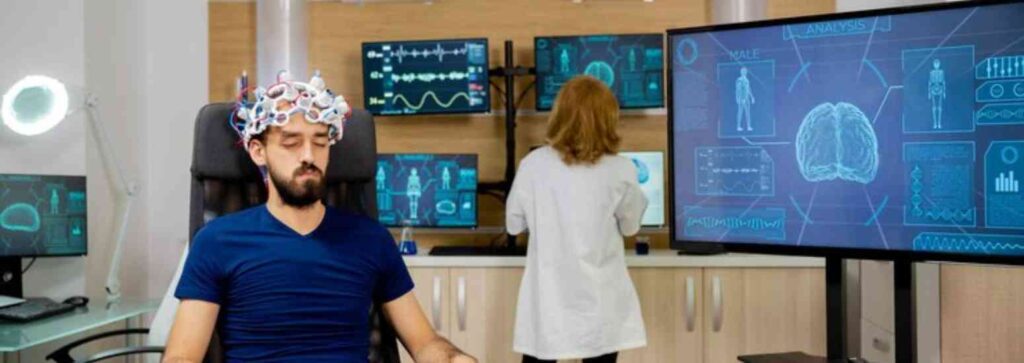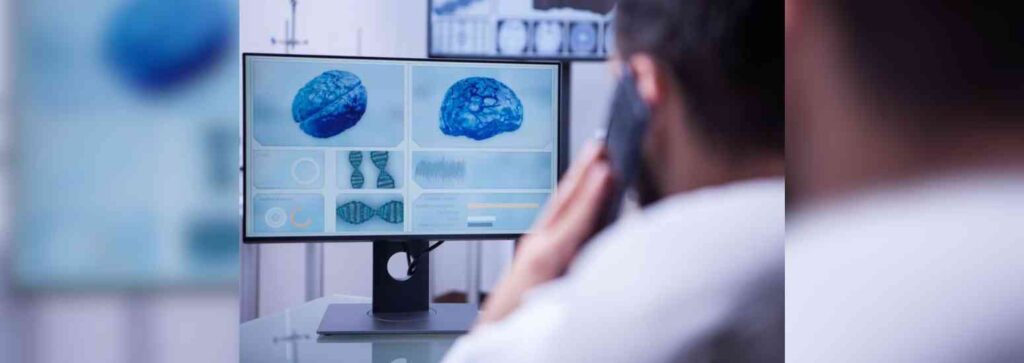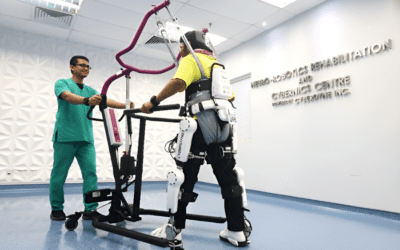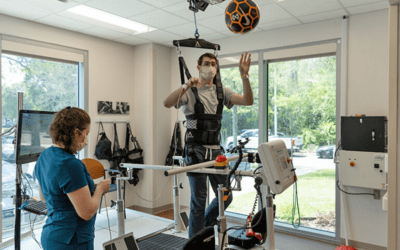The progress in Computer Technology, bioengineering, and neuroscience has opened up new opportunities for neurorecovery through Brain-Computer Interfaces (BCI). This field is increasingly important for clinicians treating individuals with long-term functional deficits from neurological disease or injury.
Brain-computer interfaces (BCIs) can restore or replace lost functions to enhance users’ independence, reduce isolation, and facilitate societal reintegration.
After reviewing the principles, benefits, challenges, and opportunities of BCIs in the context of neurorecovery, the clinical translation of these technologies is explored, and a practical approach to facilitating access to BCIs for people with neurologic disease in different phases of care is proposed. Here, we use the term “neurorestoration” to refer to the restored function that results immediately from using a technology (in this case, a BCI.
NEUROREHABILITATION refers to the process by which the remaining/intact neural system regains the ability to perform a function. NEURORECOVERY is our more general term for the goal, which is agnostic to approach.
What is a Brain-Computer Interface?

A brain-computer interface (BCI) is a system that translates central nervous system (CNS) signals into command signals for an external or internal device.
The pioneering research of Richard Caton, Adolf Beck, and Hans Berger in the 1800s laid the historical groundwork for BCI technology. Their discoveries surrounding continuous electrical activity in the Brain provided a substrate for measuring and manipulating nervous system signals.
These discoveries paved the way for critical non-human primate research, the later development and deployment of EEG neurofeedback, and the first BCI prototypes.
The term BCI has since come to encompass a broad array of Advanced Technologies that interface with the nervous system, from cochlear implants to restore hearing to the NeuroPace device, a responsive neurostimulator for treating medically refractory epilepsy.
Broadly construed, BCIs restore or rehabilitate function, aiming to improve users’ capacities to communicate, interact with the environment, and achieve other personal goals.15
BCI Integration Revolutionises Rehabilitation Therapy for Enhanced Motor Recovery
The latest developments in rehabilitation therapy involve using Brain-Computer Interfaces (BCIs) to improve motor imagery (MI) and provide closed-loop feedback. MI-based BCIs offer a new approach to rehabilitation by allowing patients to participate in mental tasks associated with movement, thus promoting neural reorganisation and motor recovery. Research has shown that combining BCI technology with FES feedback can lead to better rehabilitation outcomes, including enhancements in walking speed, by providing real-time sensory input based on patients’ movement intention.

This trial will examine the effects of combining BCI technology with MI and FES feedback on improving lower limb movement for stroke patients. The goal is to understand how this approach influences therapy outcomes, such as walking speed, to enhance stroke rehabilitation strategies. The study will compare results with traditional therapies like EGAIT_EE to demonstrate the potential benefits of using BCI technology in rehab programmes.
RECOVERIX – Brain Computer Interface
After a STROKE, complete recovery may not always be possible, but recovery neurorehabilitation can help improve function, enhance quality of life, and promote independence for individuals at any stage of their recovery journey through the activation of neuroplasticity during recovery training.
- 99.9% of clients improve spasticity
- 99% of clients improve gross motor functions
- 95% of clients improve fine motor skills
- 99.9% of clients improve their mental performance
- 95% of clients improve concentration
- 0% side effects
How much time is needed for Brain Computer Interface?

Each recoveriX block includes 25 training sessions, each lasting about an hour. We recommend having three training sessions per week, but patients can undergo up to two treatments daily, with a break in between. This flexibility not onlyminimizes the fatigue associated with travel time but also allows for personalised treatment plans to fit individual needs.
Results of RecoveriX
The effectiveness of recoveriX was demonstrated in a study involving 25 individuals with Multiple Sclerosis. Following 30 training sessions with recoveriX, participants exhibited a substantial improvement in their walking ability, walking 39.4 metres further after completing the programme compared to before.
Reference: How To Manage Complex Medical Conditions.
To know more, write to us/ call us today! – Rehab Modalities



